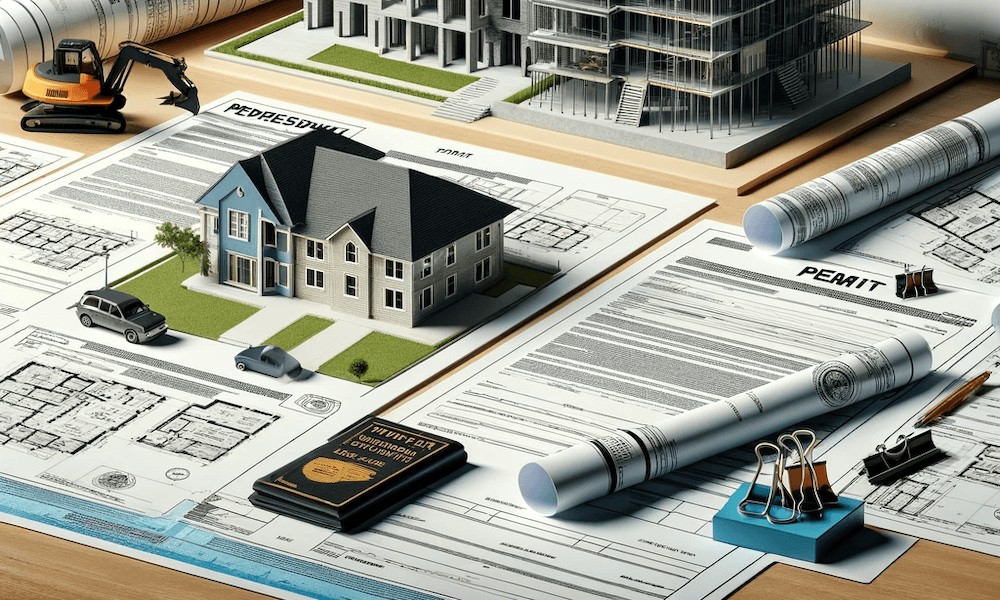If you’ve never had to apply for a building permit before, the process can seem complex. While approval can take time, the process itself is relatively simple. What complicates matters is specific requirements for building permits that can vary considerably between states and local municipalities. This guide will take you through the steps of the application process, but you will still need to make time to understand regional requirements.
Understanding the Basics
Having a planning permit does not mean you can immediately start construction. A planning permit is separate from a building permit and is usually applied for first.
What is a Building Permit?
A building permit is an official approval issued by local government agencies, typically the local planning or permitting department. It allows you to proceed with a construction or remodeling project on your property. It ensures that your plans comply with local standards for land use, zoning, and construction. These standards are primarily designed to ensure the safety and integrity of the building. You may need to have several permits to cover different aspects of the project, such as electrical and plumbing.
Why is it Necessary?
Obtaining a building permit is crucial for ensuring that your construction project adheres to local codes and regulations. These regulations are in place to protect the public health, safety, and welfare. Additionally, having a permit can protect your financial investment, as unpermitted work might lead to costly future corrections, affect insurance coverage, and impact property resale value.
The Common Steps
- Pre-Application Research
Before applying, it’s essential to understand the zoning laws and building codes applicable in your area. This preliminary step can save you time and resources. Some municipalities require a pre-application meeting for certain projects. Even if it isn’t required, having a pre-application meeting can be immensely useful in understanding specific requirements.
- Preparing Your Application
Typically, an application requires detailed plans of the proposed project, including site plans, architectural drawings, and engineering details. You might also need to provide an estimate of the total cost.
- Submission and Review
Many planning departments now allow – or require – applications to be submitted electronically. For example, in the City of Austin, the future use of Archistar’s eCheck platform will allow for immediate completion and compliance checks. This can shorten the application process because it allows you to correct any compliance issues before resubmitting. You will also need to pay a permit fee.
Once submitted, your application undergoes a review process where city officials ensure that your plans comply with local codes and regulations. This process can vary in length, depending on the complexity of the project. Expect anything from one month through to a year.
- Building Permit Approval and Inspections
Only once your building permit application has been approved, can construction begin. However, it’s subject to inspections at various stages to ensure ongoing compliance with the building code.
- Final Approval
Once your project is completed, a final round of inspections will be carried out. If these all pass, you will be issued a certificate of occupancy or a similar document that marks the official completion of the permit process.
Variations Across Regions
While the basic process is similar, there can be significant differences in requirements and timelines across various states and municipalities.
New York City
In New York City, the Department of Buildings requires additional clearances and documentation due to the city’s dense urban environment. For instance, new building and enlargement applications must now also include a street tree checklist.
Texas
In Texas, there’s a notable emphasis on floodplain regulations, especially in coastal areas. Developers often must provide additional documentation, such as an elevation certificate, to prove compliance with floodplain management ordinances.
Tips for a Smoother Process
Engaging with local building authorities or a professional early in the process can provide valuable insights and help avoid common pitfalls. Additionally, you should:
- Stay Updated: Building codes and regulations can change. It’s essential to stay up to date with current standards to ensure compliance.
- Professional Help: Consider hiring an architect or a permit service company, especially for complex projects. Their expertise and familiarity with local regulations enable them to manage the process more efficiently.
- Be Patient and Persistent: The process can be lengthy and may require revisions to your plans. Patience and a willingness to work through the requirements are key.
Regardless of complexity, it helps to remember that this process is not just a bureaucratic hurdle; it’s an essential aspect of responsible and safe property development. Local municipalities can also fast-track approvals by implementing solutions like Archistar’s eCheck. You can request a demo or try our Archiland sandbox to see how your city could benefit.


